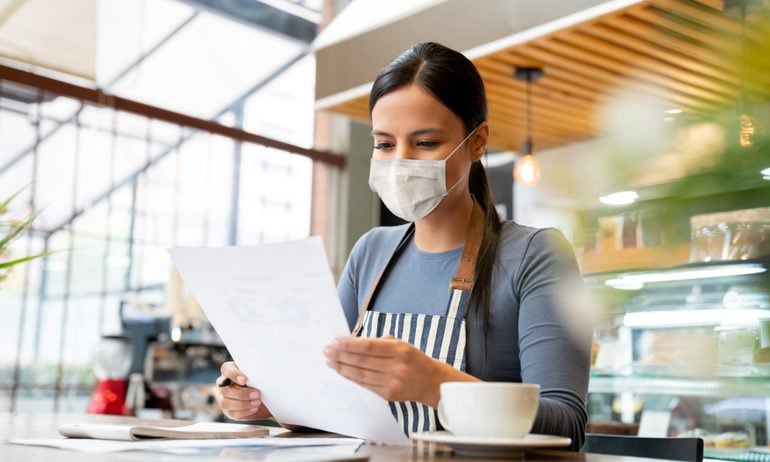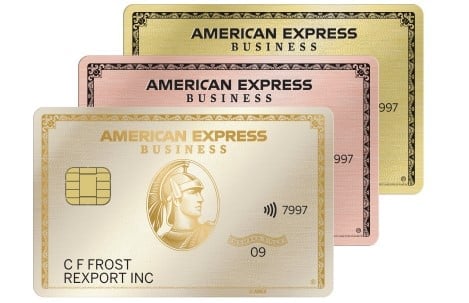How Businesses Can Apply for a Second PPP Loan
Certain hard-hit businesses are eligible to receive a second PPP loan under the new COVID relief package.

Many, or all, of the products featured on this page are from our advertising partners who compensate us when you take certain actions on our website or click to take an action on their website. However, this does not influence our evaluations. Our opinions are our own. Here is a list of our partners and here's how we make money.
Small businesses hit hardest by the coronavirus pandemic can receive a second forgivable loan under the newly revived Paycheck Protection Program. The application for "second-draw" loans opened to all eligible borrowers on Jan. 19. The deadline to apply is May 31, 2021.
Congress designated $137 billion for PPP second draw loans as part of a larger funding and relief package. The bill, signed into law on Dec. 27, includes a total of $284.5 billion for PPP loans. Businesses that need help beyond their initial loan can receive a second loan if they can show substantial revenue decline and meet other requirements detailed below.
FIND NON-PPP LOANSPPP has exhausted its funds, but other lenders may be able to assist you. See options with Fundera by NerdWallet. |
Here’s everything we know about second-draw PPP loans.
How much do you need?
We’ll start with a brief questionnaire to better understand the unique needs of your business.
Once we uncover your personalized matches, our team will consult you on the process moving forward.
Who qualifies for second-draw PPP loans
If you or your business received an initial PPP loan, you may qualify for a second round of funding, provided you meet the following requirements:
Have no more than 300 employees.
Have used or will use the full amount of your first PPP loan.
Can show a drop of at least 25% in annual gross receipts or for any quarter of 2020, compared with the same quarter in 2019.
Have not permanently closed. Businesses that have temporarily closed or suspended operations can receive a second-draw loan.
Second-draw PPP loans are available to businesses, certain nonprofits, self-employed individuals, independent contractors, sole proprietors, housing cooperatives, small agricultural cooperatives, veterans’ organizations and tribal businesses.
Businesses that receive a Save Our Stages grant cannot receive additional PPP loans.
How much you can receive for a second PPP loan
The formula for second-draw PPP loans is similar to that of initial loans: Borrowers can receive up to 2.5 times their average monthly payroll costs. Average monthly payroll costs can be calculated using one of the following:
The 12 months prior to the loan.
Calendar year 2019.
Calendar year 2020.
Seasonal businesses (typically operating for less than seven months in a calendar year) and new businesses in operation on Feb. 15, 2020, but not open for a full 12 months, will use a separate formula to calculate average monthly payroll.
Seasonal businesses: Average total monthly payroll for any 12-week period between Feb. 15, 2019, and Feb. 15, 2020.
New businesses: Total payroll costs divided by the number of months those costs were paid out.
Hotels, restaurants and other accommodation and food service businesses can borrow up to 3.5 times their average monthly payroll costs.
Unlike initial loans, the maximum amount for second-draw PPP loans is just $2 million. First-time PPP loans max out at $10 million.
How the money can be used
Second-draw funds are forgivable, provided they are spent on covered costs, including:
Payroll costs, including paid sick leave and group insurance benefits provided by the employer.
Operating costs, including payments for mortgage, rent, utilities, software, and human resources and accounting needs.
Property damage sustained during protests and disturbances in 2020, unless covered by insurance.
Payments to a supplier covering contracts and purchase orders in effect before taking out the second-draw loan.
Personal protective equipment and modification made to meet health and safety requirements.
At least 60% of the total loan amount must be used on payroll expenses to qualify for full loan forgiveness.
How to apply
In order to apply for a second-draw PPP loan, businesses need to submit an application along with documents to verify payroll costs and revenue loss, such as tax forms or bank statements, by May 31, 2021.
You can avoid some paperwork by using the same lender for first- and second-draw loans, provided you use payroll figures from calendar year 2019 when applying for the second loan. Check with your lender to see if it is planning to offer second-draw loans.
Borrowers seeking $150,000 or less don’t need to prove revenue loss when they apply for a second-draw loan but will need to do so in order to apply for loan forgiveness.
Loan forgiveness
Second-draw loan funds can be forgiven if they are used on covered costs within 8 to 24 weeks of receiving your loan. The exact time frame is determined when you apply for your loan. At least 60% of the total second-draw loan must be used on payroll expenses to qualify for full loan forgiveness. Up to 40% can be used on other covered expenses detailed above.
Business owners who borrow $150,000 or less can submit a one-page certification that details the following:
The number of employees they retained as a result of the loan.
An estimate of how much of the loan was spent on payroll costs.
The total loan amount.
Proof of qualifying revenue loss, if not already provided to the lender.
Business owners who borrow more than $150,000 will complete the same forgiveness process required for their first PPP loan. If you fall into that category, you’ll need documentation to show how the money was spent. This could include:
Payroll expenses and headcount: Tax forms, canceled checks, bank statements, payment receipts and third-party payroll reports.
Operating costs: Receipts for business software, accounting services, utility payments and rental, lease or mortgage payments.
Supplier costs: Purchase orders, contracts and receipts for payments made to vendors.
Other covered expenses: Proof of payment for health and safety modifications, such as sneeze guards, ventilation systems, expanded outdoor space and equipment to perform health screening; receipts for the purchase of face masks and other personal protective equipment.





